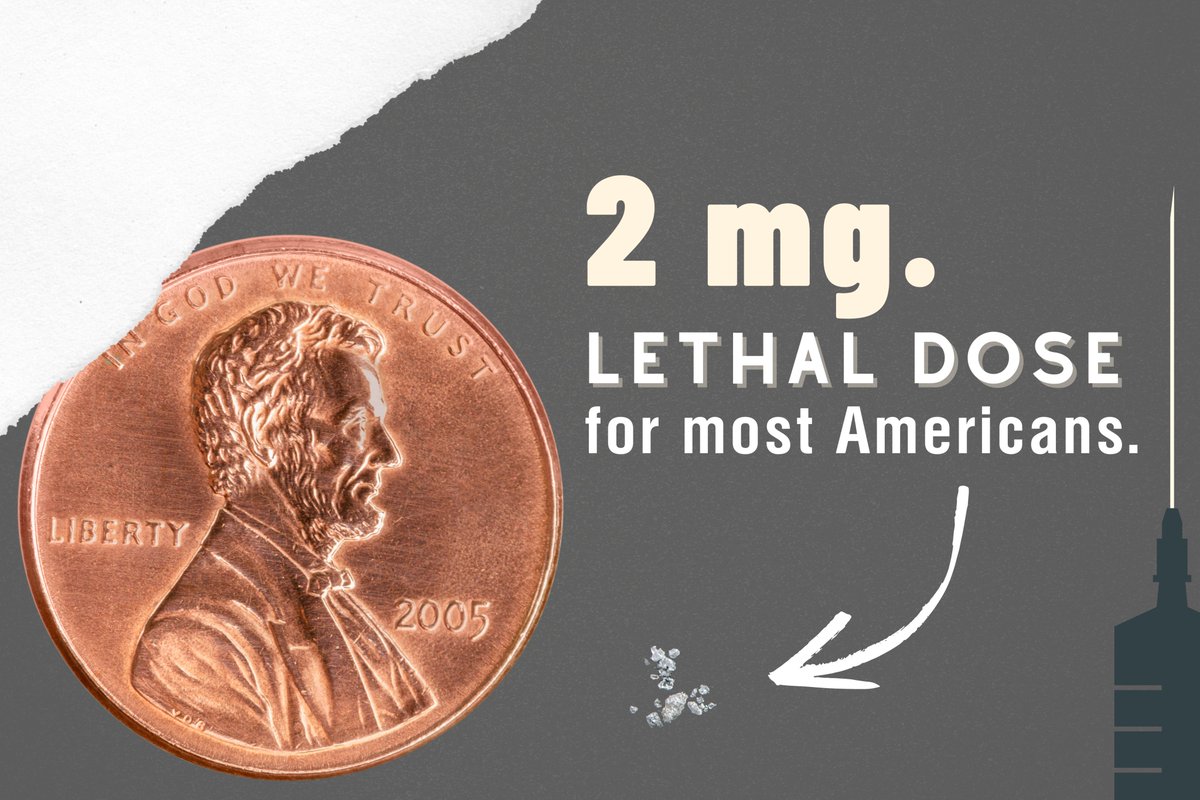Media coverage of fentanyl is beyond a quick fix, but I still think this one would improve it. Journalists often use the popular refrain that just 2 milligrams of fentanyl is a deadly dose for most Americans. What if, instead of doing that, we just … stopped?
Around 2016, the Drug Enforcement Administration (DEA) began stating that a lethal dose of fentanyl for most opioid-naive adults was 3 mg. Early on, the agency attributed this claim to consulting firms or the European Monitoring Centre for Drugs and Drug Addiction, but for the most part it just cites itself.
In 2018 the DEA quietly scooched the 3 mg figure down to 2 mg, giving us the boilerplate line most media outlets use today. You’ve probably seen it alongside the one about how fentanyl is 50 times more potent than heroin and 100 times more potent than morphine. Carfentanil has not yet been assigned a deadly dose, so articles that mention it say that it’s 100 times more potent than fentanyl, just 2 mg of which is a lethal dose for most Americans, and let people calculate their own conclusions.
The framing of a universal overdose threshold is unhelpful for a few reasons. One is that the amount of fentanyl someone without an opioid tolerance can safely consume still varies a lot by individual physiology or route of administration. Another is that the term “opioid-naive” is a confusing catch-all in any article that also says it’s a fatal error to think all opioids are the same. Though that one makes sense once you remember that journalists are mostly addressing readers who don’t use opioids, and not worried about most of those who do.
Reporting standards around fentanyl have been more rapidly decompensating since 2021, when the DEA rolled out its One Pill Can Kill campaign. But the news industry isn’t just willing to take DEA propaganda and pushing it out to the public as-is; we’ve turned it into something much worse.
DEA says it seized more than 379 million potentially fatal doses of fentanyl in 2022, enough to kill every American https://t.co/lPURrReR98
— The Washington Post (@washingtonpost) December 20, 2022
At the end of 2022, the DEA announced it had seized 379 million “deadly doses” of fentanyl that year. Administrator Anne Milgram said this was enough fentanyl “to kill every American,” a phrase that checks every box news outlets are looking for in a headline.
Now, on a day-to-day basis there’s really just one headline shared by most fentanyl coverage on the internet: “DEA and/or Local Sheriff’s Department Seizes Enough Fentanyl to Kill ____.”
This framing is an extrapolation of the math that 2 mg fentanyl equals one person killed, except it also introduces a massive opportunity for distortion. Some of the seizure reports refer to powder or pills that are 100-percent fentanyl, but not all of them. Sometimes most of the weight is filler.
Quick Fact: Texas law enforcement has seized more than 434 million lethal doses of fentanyl across the state. That’s enough fentanyl to kill every man, woman and child in the United States.#onepillkills#FentanylPoisoningAwarenessMonth pic.twitter.com/nOtzISgOs8
— Texas DPS (@TxDPS) October 23, 2023
Journalists are good about using analogies for any numbers the average reader can’t readily picture, but bad at thinking up ones that actually work. This is why the industry measures people in football stadiums (60,000:1), and I assume has something to do with the DEA suggesting that the unit of measurement for fentanyl is table salt (1 lethal dose:10-15 grains).
Only so many headlines that can say a quantity of fentanyl is enough to kill every American, or the population of a given city. Then they have to start differentiating themselves by saying it’s enough fentanyl to kill a given population multiple times, or half that population one time, or everyone 18 times, or everyone within 18 counties, or two big counties and some surrounding ones.
There is nothing of value here. It’s fearmongering, it tells some people that they could die and others that they’re supposed to, it turns the media into even more a DEA mouthpiece than it already is, and it packages information critical to the public in a way that makes it actually harder to understand.
Of course, retiring the 2 mg framework requires journalists have some level of willingness to stop sourcing stories from law enforcement, but some of them might be willing to consider that too.
Image via Congressman Dan Newhouse





Show Comments